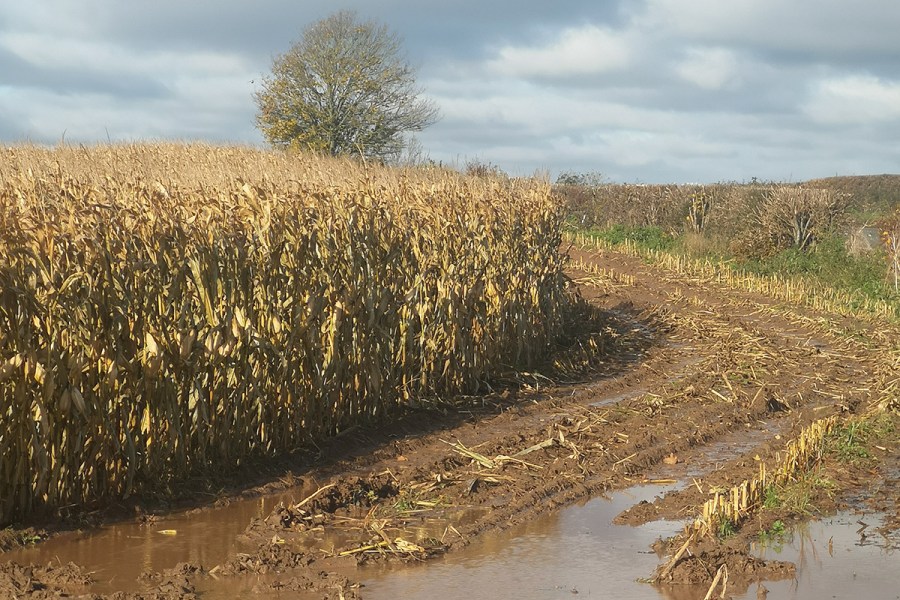Wet ground conditions continue to hamper maize harvest across much of the country, leaving many growers with crops still standing in the field. Feed preservation specialists, Kelvin Cave Ltd, have therefore reminded growers of one option which could salvage the best feed value from maize, while easing its harvest in difficult conditions.
Technical director, Michael Carpenter, says those with access to the right machinery could consider harvesting their maize as high moisture grain. This ideally means having access to a 4WD or tracked combine with a maize header. A crimping machine is then required to prepare the crop for easy storage, without the need for drying. The rolled crop can then be preserved as a high energy concentrate feed, suitable for dairy, beef and sheep, or for anaerobic digestion.
“I know of several contractors with this machinery who are already harvesting and crimping large acreages of grain maize in this way,” he says.
A particular attraction of switching from forage to grain maize in wet conditions is a less messy and problematic harvest.
“The combine will travel on a mat of shredded stalks and leaves, which is cut ahead of the vehicle, creating far less mud on tyres and roads,” Michael explains. “The combine can also deliver its grain to a gateway, avoiding the need for heavy trailers to traverse wet ground, and minimising soil compaction.”
Once back at the yard, the crop is passed through a suitable roller on the day of harvest and has a salts-based preservative, such as CrimpSafe 300, applied.
“The resulting crimped maize will typically have a metabolisable energy of around 14MJ/kg DM and over 70% starch, providing a cost-effective option for a high energy, home-grown feed,” he adds. “Its high feed value is just as relevant for anaerobic digestion as it is for feeding livestock.”
Taking late wholecrop maize silage
However, if there is no alternative to foraging wet wholecrop maize – such as insufficient cob formation or the lack of available equipment – great care must be taken with its preservation.
Independent silage consultant, Dr Dave Davies from Silage Solutions, highlights the challenges of preserving maize silage as the crop matures beyond its optimum dry matter of 32-35%.
“As wholecrop maize matures, so its dry matter increases while its digestibility, energy content and total harvestable yield go into decline,” he explains. “The plant, as it dies, also becomes more prone to fungal infection in the field, increasing the mycotoxin risk and greatly increasing the challenge of aerobic spoilage of the silage at feed-out.”
Higher dry matter in itself adds to the challenge of compaction and the risk of aerobic instability. In addition, the grain is much more difficult to crack, so attention to corn cracking every grain is essential. Higher DM is also associated with lower acid production, potentially compromising the speed at which starch reaches its maximum degradability.
All of this points towards the need for extra care in wholecrop maize preservation, according to Michael: “It’s why we would strongly recommend using the preservative, Safesil Pro, for high DM maize, in this year’s generally difficult harvesting conditions.
“This product has been formulated to deal with the challenges to aerobic stability we expect to see in the remainder of this year’s maize. And it will inhibit the spoilage organisms – including those from soil contamination – which are likely to threaten its quality.
“We’d advise against a bacterial inoculant in these conditions, as these are unlikely to prevent the proliferation of the many undesirable organisms in this type of challenged crop,” he concludes.
For more articles like this, subscribe here.
Sign up for Crop Production Magazine’s FREE e-newsletter here.




